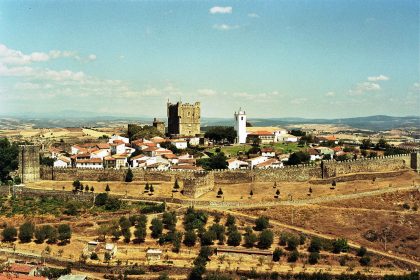
Bragança is a medieval hilltop town in northern Portugal, 22 kilometres from Spain.
Although there seems to be no record of a Jewish presence in Bragança in the 12th century, the royal privileges of 1187 mention the penalties for attacking a Jew on arrival. In exchange for this royal protection, the community had to pay high taxes.
During the reign of Alfonso IV (1325-1357), the city’s inhabitants complained about Jewish financiers. The Jews worked mainly in various crafts (silk, tanning, etc.). They lived in a Jewish quarter, notably the Rua dos Gatos .
Other disputes were sometimes settled at meetings between religious and political authorities. In 1461, for example, Rabbi Jacob Cema represented the Jewish community in discussions with the municipal authorities.
Following the mass conversion of 1497, Bragança became an important centre of Marrano life. Numerous sites bear witness to this history in a district where most Marranos lived, although attempts to re-establish a community failed until the early 20th century.
Important Jewish figures include Isaac Orobio de Castro (1620-1687), Jacob de Castro Sarmento (1691-1762) and Abraham Gabriel Pissarro, father of the famous painter.
The community relived from 1925. Opened in 2017, the two-story Sephardi Interpretive Center is dedicated to the life of Jews under the persecution in the fifteenth and sixteenth centuries and focuses on the history of New Christians, those who were forced to convert from Judaism to Christianity under duress during the Portuguese Inquisition, which began in 1532. The building’s opening was attended by the mayor and leaders of Portugal Jewish community.
The museum features artworks and objects about the anusim and a large monument in the shape of an olive tree, whose branches are emblazoned with the names of locales that had anusim communities.
Sources : Encyclopaedia Judaica, Rede de Judiarias